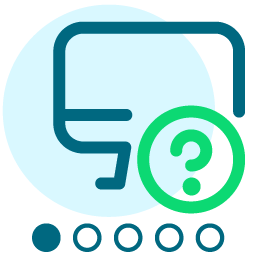What Are the Key Benefits of Using Fabric with Power BI?
Hi everyone,
I’ve recently heard about Microsoft Fabric and its integration with Fabric Power BI, and I’m curious about how it actually enhances the Power BI experience.
What are the key benefits of using Fabric with Power BI? Does it improve performance, data management, collaboration, or something else entirely? I'd love to hear from anyone who's started using it—especially in a business or enterprise setting.
Looking forward to your insights
thanks in advance!
Michelle Alice
Comments
-
@Michelle Alice, I am also interested to hear from anyone who has been using Fabric + Power BI. Organizations who had subscribed to Power BI Premium Capacity licenses will need to renew under Microsoft's Fabric Capacity SKUs instead, as Power BI Premium Capacity SKUs are being sunset. I am not familiar with the cost difference, but the additional benefits with Fabric are exciting! See @Stephanie Osborne's related question about Power Automate to Fabric. After getting data into a Fabric Warehouse, it's possible to build a semantic model and then build reports all within Fabric's browser experience. Time will tell whether this is an improvement over using Power BI Desktop, or just different. But Microsoft has said that they are investing in Dataflow Gen2, while Power BI Desktop relies on Dataflow Gen1, so we can expect this browser/cloud experience is the way of the future.
For organizations currently storing files on SharePoint to support Power BI, having that data in a Fabric Lakehouse with time travel capabilities could be very cool. Or simply having the data in a Fabric Warehouse instead of .csv files may be desirable.
0 -
@Michelle Alice
I don't currently use Fabric and was interested and remember a discussion I had with someone from Microsoft about this in BBcon.I currently use Azure SQL Server as data warehouse, Power Automate that utilize SKY API to load data every 4 hours into data warehouse, then Power BI Desktop connects to the Azure SQL Server data warehouse to load/import data using Power Query inside Power BI Desktop to do data transformation, finally publish to Power BI service for these dashboards and reports to be available for my org's staff for consumption.
Per the Microsoft rep, what I am doing is comparible to using Fabric data lake.
0
Categories
- All Categories
- High Education Program Advisory Group (HE PAG)
- BBCRM PAG Discussions
- Luminate CRM DC Users Group
- DC Luminate CRM Users Group
- Luminate PAG
- 186 bbcon®
- 1.4K Blackbaud Altru®
- 60 Blackbaud Award Management™ and Blackbaud Stewardship Management™
- 1.2K Blackbaud CRM™ and Blackbaud Internet Solutions™
- donorCentrics®
- 361 Blackbaud eTapestry®
- 2.4K Blackbaud Financial Edge NXT®
- 616 Blackbaud Grantmaking™
- 542 Blackbaud Education Management Solutions for Higher Education
- 3.1K Blackbaud Education Management Solutions for K-12 Schools
- Blackbaud Luminate Online® and Blackbaud TeamRaiser®
- 75 Blackbaud Community Help Page
- JustGiving® from Blackbaud®
- 6.2K Blackbaud Raiser's Edge NXT®
- 3.5K SKY Developer
- 262 ResearchPoint™
- 116 Blackbaud Tuition Management™
- 160 Organizational Best Practices
- 232 The Tap (Just for Fun)
- 30 Blackbaud Community Challenges
- Blackbaud Consultant’s Community
- 18 PowerUp Challenges
- 3 Raiser's Edge NXT PowerUp Challenge: Gift Management
- 4 Raiser's Edge NXT PowerUp Challenge: Events
- 3 Raiser's Edge NXT PowerUp Challenge: Home Page
- 4 Raiser's Edge NXT PowerUp Challenge: Standard Reports
- 4 Raiser's Edge NXT PowerUp Challenge #1 (Query)
- 71 Blackbaud Community All-Stars Discussions
- 47 Blackbaud CRM Higher Ed Product Advisory Group (HE PAG)
- 743 Community News
- 2.8K Jobs Board
- Community Help Blogs
- 52 Blackbaud SKY® Reporting Announcements
- Blackbaud Consultant’s Community
- 19 Blackbaud CRM Product Advisory Group (BBCRM PAG)
- Blackbaud Francophone Group
- Blackbaud Community™ Discussions
- Blackbaud Francophone Group


